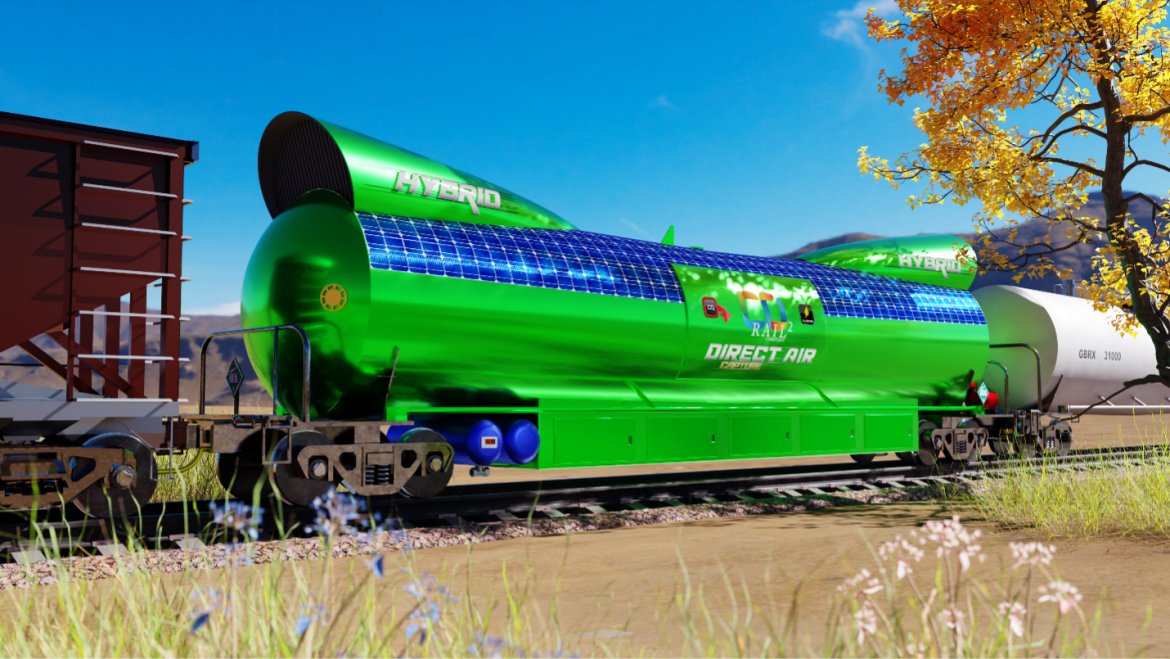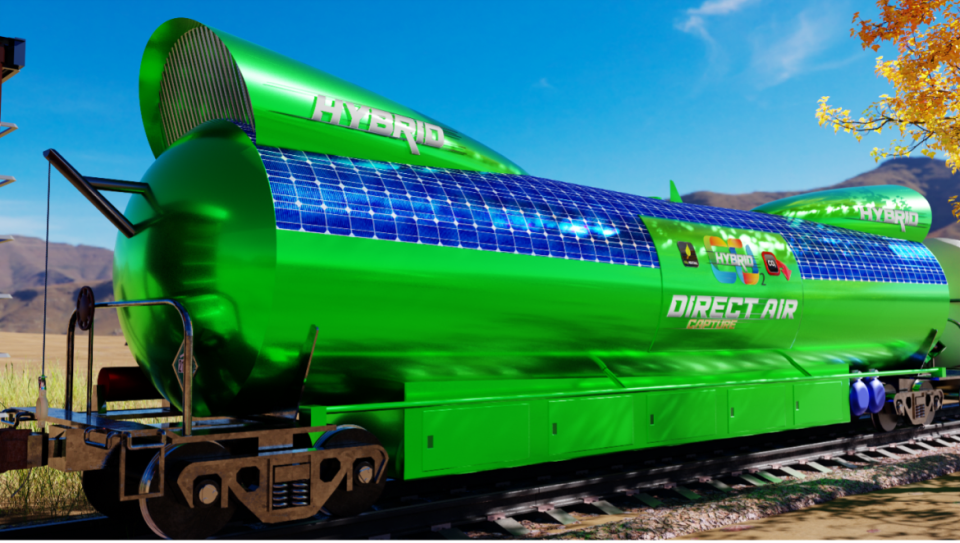Tomorrow’s Trains Will Suck Carbon Out of the Sky

Eric Bachman and Geoffrey Ozin will be the first to tell you that they are unlikely bedfellows. Bachman, the scion of a railroad family that’s been in the business since the late 19th century, and Ozin, a nanochemistry researcher with a day job at the University of Toronto, seem to have little in common. Interviewed together by The Daily Beast, they give off the vibe of a bantering comedy duo. Ozin spouted out statistics on fossil fuel consumption and asked the reporter, “You got it?”—only for Bachman to reflexively answer, “Yes, I got it, Geoff.”
But on climate change, they’re a unified front.
“I think this is the grandest challenge that's ever faced humanity,” Ozin told The Daily Beast.
What if We Captured Carbon From the Air and Made Energy?
Their solution, like their partnership, is unique: Trains that suck carbon dioxide out of the air as they chug along. The design for these vehicles takes advantage of green energy sources, direct air capture—an up-and-coming technology that will need to be scaled up fast to meet climate goals—and a chassis that bears a resemblance to Thomas the Tank Engine.
As part of the Paris Agreement, which was adopted in 2015 (and which the U.S. re-entered in 2021), countries need to reduce their carbon emissions and ratchet up carbon sequestration efforts to reach net zero emissions by 2050. Direct air capture, proponents say, will have to play a major role in the latter effort.
The process is fairly straightforward (“It's one of these things that’s elegant in its simplicity. I mean, it's not that simple,” Ozin said.) Carbon dioxide gas currently resides in our atmosphere at around 417 parts per million. Special materials called sorbents can capture the greenhouse gas and store it in liquid or solid form, which can then be concentrated and turned into products like fuel or buried underground.

A prototype of the CO2Rail Company’s carbon capture train.
The hardest part in the whole process is getting enough air to flow past a sorbent for it to count. Other direct air capture systems use massive fans to circulate air past a sorbent, but powering the fan becomes an energy challenge in and of itself that can end up releasing carbon dioxide as the system captures the gas.
In 2021, Bachman founded CO2Rail, a Texas-based company that aims to create direct air capture systems out of trains, whose motion provides an alternative to these static, fan-based systems.
“This is wasted energy currently on almost every train in the world,” Bachman said. “All we're saying is, ‘Let's do something productive with it.’”
The company’s design for carbon-sucking train cars—which Bachman, Ozin, and other energy researchers presented in a paper published Wednesday in Joule—also decreases the energy needs of the system by making use of solar panels and regenerative braking (which stores some of the kinetic energy typically lost during braking for reuse later on).
Another perk of their train car-based direct air capture model is that the mobile systems can be scaled up without permanently taking over large swaths of land, and instead be put to work on existing tracks.
But why a train in the first place? Bachman is quick to remind people that the railroad industry, for better or for worse, has been known for its can-do attitude. During the construction of the Transcontinental Railroad, workers tunneled thousands of feet through the solid granite Sierra Nevada mountain range.
Retrofitting rail cars to run on existing track is a clever way of reusing infrastructure, Georgia Tech energy researcher Matthew Realff told The Daily Beast in an email. Realff, who was not involved in the work, added that the team will want to maximize the amount of air that passes through the train car to up its efficiency.
The Electric Vehicle Revolution Is Coming for Trains
Though carbon capture technologies have yet to really take off, CO2Rail is more of a plan than a pipe dream. Bachman said that the company aims to test out their first full-scale units in a year. Within a decade, he hopes to see direct air capture units on the backs of cargo or passenger trains. Knowing that their mode of transit had net zero or net negative emissions, commuters might be more willing to swap out their drive for a train ride.
“It would be great if by commuting we could be reducing the [carbon dioxide] levels in the atmosphere at the same time” Realff speculated. “Maybe people would even pay a little extra for their ticket?”
Got a tip? Send it to The Daily Beast here
Get the Daily Beast's biggest scoops and scandals delivered right to your inbox. Sign up now.
Stay informed and gain unlimited access to the Daily Beast's unmatched reporting. Subscribe now.

 Yahoo News
Yahoo News 
